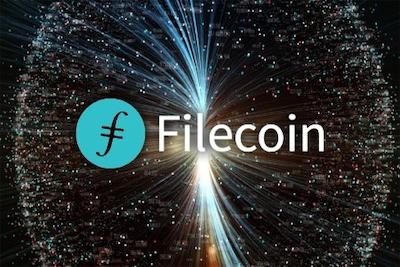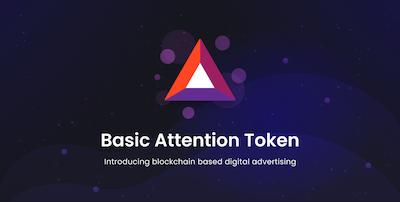Now that Web1.0 and Web2.0 have passed, the Internet world is on the verge of ushering in a new wave of revolution. Decentralized structures such as blockchain, DeFi, and NFT provide a major opportunity for the Web 3.0 era and will have a dramatic impact on currency, data, finance, and resource ownership.
As Google and Amazon were start-ups 20 years ago, they have become today’s engineering giants since they surmounted Web1.0 and Web2.0. Today’s start-ups are at the beginning of Web3.0. By grasping this opportunity well, you will have the chance to create a company that has a great influence on the next generation.
Metaverse, which was recently discussed, comes to mind as an implementation interface, while Web3.0 is the business model, data record, business prototype, etc. behind it, “similar to the relationship between the front desk and the middle back office.”
Currently, the Internet is enrolled in Web3.0 after Web1.0 and 2.0. Web3 is driven by blockchain, DeFi, and NFT, and it is also closely related to AI and IoT.
Web 3.0 cryptocurrencies might welcome a new generation of investors to the crypto market. Let me share the top1 0 Web 3.0 coppers( cryptocurrency) to buy before 2022.
1. Polkadot (DOT)

No matter how familiar you are with Web 3.0, there’s a good chance you’ve heard of the Polkadot network. DOT’s market capitalization is over $42 billion, making it the ninth-largest cryptocurrency in the world. The network is also expected to lead the way into the Web 3.0 era, since it is dedicated to ushering in a fully decentralized internet via parachains.
Polkadot Parachains are unique to the Polkadot ecosystem, and they present a highly scalable and appealing way to weave applications together. As opposed to hosting all of its projects on one blockchain, Polkadot gives each project its own chain that runs parallel to the others. These parachains give developers more freedom, more experimentation opportunities, and more support. Therefore, they are quite popular.
Polkadot’s parachains are so attractive to developers that the network doesn’t need to try very hard to attract new apps. The developers, on the other hand, fight tooth and nail for their own chain in parachain auctions. Currently, the network supports only 100 parachains, and it is only now opening up to developers. Early in November, ten projects competed in the first parachain auctions to raise the most DOT. The blockchain decides when the auction ends at random; after the first auction, Acala was the lucky winner. It raised more than $1.3 billion in DOT.
Aside from these chains, Polkadot is a sought after Web 3.0 play because it takes care of its projects. In order to help fund the development of the network’s projects, it has nearly $1 billion in assets. The method in which these loans will be disbursed is entirely at the discretion of the community in true Web 3.0 style.
2. Filecoin (FIL)

Filecoin is the different factor on the record. Filecoin is a submission system for Web 3.0. It serves as a decentralized storage community to offer an alternative to cloud-based storage.
Filecoin needs community members to manage the storage of their units. In the Filecoin community, you can store anything you like, whether it’s audio, video, text, or a photograph.Additionally, the Filecoin community claims to breathe safer for captious information. Therefore, it could be helpful for storing company information and datasets. Blockchains are operated by using cryptography, which preserves data records.
Apart from storing information, the community also retrieves information eastward. The community uses geographic information to link customers and suppliers. Whenever you store information on the network, Filecoin will find a nearby supplier to make the information easily accessible.
3. Basic Attention Token (BAT)

BAT is the token powering a new blockchain-based digital advertising platform designed to fairly reward users for their attention while providing advertisers with a better return on their ad spending.
This experience is delivered via the Brave Browser, where users can watch privacy-protecting ads while earning BAT rewards. Alternatively, advertisers can deliver targeted ads to maximize engagement and minimize fraud and abuse losses.
In this advertising ecosystem, Basic Attention Tokens are the reward units, which are exchanged between advertisers, publishers, and users. Advertisers pay for their advertising campaigns using BAT tokens. A small portion of this budget is distributed to advertisers while 70% is distributed to users — while the intermediaries that drive up advertising costs are eliminated in order to improve efficiency.

In 2017, Basic Attention Token was launched following one of the fastest initial coin offerings (ICOs) of all time, raising $35 million in less than a minute. Users in most countries can now access its attention-based advertising experience through Brave Rewards.US, UK, and Canadian advertising campaigns were the most active countries in 2021.
4. The Graph (GRT)

DeFi and the broader Web3 ecosystem are both powered by The Graph, an indexing protocol used to query data for networks like Ethereum and IPFS. Using GraphQL to retrieve blockchain data, anyone can build and publish open APIs called subgraphs. The Graph is already in production with a hosted service that makes it easy for developers to get started. The decentralized network will launch later this year. There will be more networks added to the Graph soon, including Ethereum, IPFS, and POA.
Over 3,000 subgraphs have been deployed by thousands of developers, for DApps such as Uniswap, Synthetix, Aragon, AAVE, Gnosis, Balancer, Livepeer, DAOstack, Decentraland, and many more.
The Graph raised funds from community members, strategic VCs, and influential members of the blockchain community, including Coinbase Ventures, DCG, Framework, ParaFi Capital, CoinFund, DTC, Multicoin, Reciprocal Ventures, SPC, Tally Capital, and others. In addition, the Graph Foundation successfully completed a GRT Sale with participation from 99 countries (excluding the United States).
5. Livepeer (LPT)

Launched in 2017, Livepeer is the first decentralized network protocol for live video streaming. Platform aims to become a viable blockchain-based, economically efficient alternative to centralized broadcasting solutions for all new and existing broadcasting companies.
According to the Livepeer whitepaper, the live video streaming and broadcasting industry is booming, and Livepeer wants to take advantage of the growing trend by introducing decentralization. Livepeer simplifies the broadcasting process by allowing producers to upload their work, with Livepeer handling the reformatting and distribution of the content to viewers.
The Livepeer project is unique because it uses blockchain technology to revolutionize the broadcasting industry. With an open-source platform, users and developers can participate freely in managing and improving the platform. The increasing capacity of digital cameras to create high-quality video content drives the development of the broadcasting industry, and Livepeer hopes to further accelerate this process by allowing users to benefit from decentralized computing power and crypto-economic incentives for bootstrapping and participation.
The Livepeer platform enables users to participate in a variety of ways, making it a leading industry platform. It allows for pay-as-you-go content consumption, auto-scaling social video services, uncensorable live journalism, and video-enabled DApps. Livepeer is redefining live video streaming and is on track to become an industry leader.




































